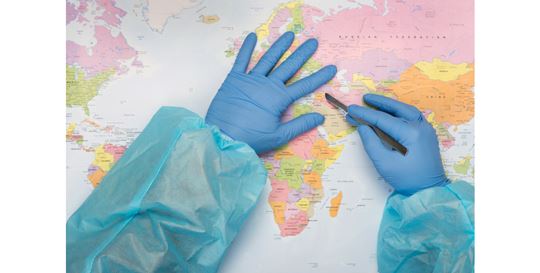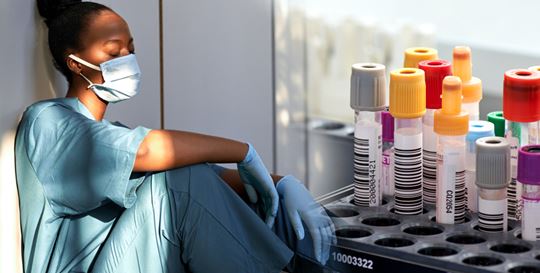Antimicrobial Resistance: A Global Threat
We live in a global world. From those we interact with, to life-changing events such as the COVID-19 pandemic, we share a great interconnectedness, shaping how we solve public health issues. One of the greatest threats is antimicrobial resistance (AMR)–when germs develop the ability to survive exposure to previously effective treatments.
Refugee Crises: Changing Patterns a Cause for Concern
According to the United Nations High Commissioner for Refugees, at the end of 2022, 108.4 million people were considered forcibly displaced due to persecution, violence, and human rights violations.1 This includes 32.5 million refugees and 53.2 million internally displaced people.1 Europe is home to more than 27 million refugees, and the United States has settled over 3 million refugees since 1975.2,3 Recent and ongoing conflicts in the Middle East, Africa, and Eastern Europe have driven an increase in refugees over the past few years.4
Evolving migration patterns cause concern for the possibility of epidemic outbreaks and hamper efforts to address AMR. Concerns include new surges of COVID-19, a resurgence of diseases, like polio, previously considered eradicated, and the spread of multidrug-resistant organisms (MDROs), now often resistant to standard antibiotic treatment.

How Migration Patterns Impact AMR
While refugees focus on resettling and restarting their lives, we must consider the global public health impact and how we shape policies to combat AMR. The movement of people across different geographies can spread disease through direct human transmission, leading to infections in vulnerable populations require antibiotics.4 The changing shifts in populations alter resistance patterns–people carry resistance to certain bacteria and can unknowingly introduce resistance into the global bacterial population through genetic transfer between microorganisms.4
Furthermore, refugees’ migration journeys and previous experiences in their countries of origin make accessing antibiotics and treating illness more complex. Health systems barriers include experiencing long waiting times for care, limited capacity of health services, and high costs of care.5 The World Health Organization’s Global Evidence Review on Health and Migration found refugees’ experiences with health systems barriers in their countries of origin impact if and how they seek treatment in their new location. Refugees’ previous difficult healthcare experiences can “increase the vulnerability of these populations [and] may result in unnecessary or incorrect use [of antibiotics], which often leads to poorer health outcomes for the users and further development of drug-resistant pathogens.”5
Looking Ahead: One Health
To prevent onward transmission, professionals must be aware of the increased prevalence of MDROs associated with migrations and follow infection prevention and control measures. AMR should be addressed under the One Health concept, acknowledging connections among human, animal, and environmental health, and promoting collaboration across sectors, disciplines, and communities.
The One Health approach includes:
- Improving antimicrobial stewardship–by bettering antibiotic prescription practices and focusing on appropriate use
- Successful implementation of antimicrobial stewardship initiatives could save up to 1.6 million lives by 2050 and 4 billion USD annually6
- Investing in the discovery and development of new antimicrobials
- Supporting better education on antimicrobial use and consumption
- Driving scientific research on resistance patterns of MDROs and novel combinations of antibiotics to treat MDRO infections
Additionally, global programs must ensure their action plans include investments to address AMR, such as ensuring equitable access to the appropriate use of antibiotics and improving knowledge of antibiotics through community-based initiatives.5
AMR continues to be a top global public health threat and priority.7 The challenging nature of infectious diseases combined with ongoing conflicts driving migration and resistance patterns across geographies reminds us of our interconnectedness and the need for collaboration to improve and address global health threats.
It is critical that microbiology laboratories have the best diagnostic tools to rapidly identify bacteria, detect emerging and critical AMR through antimicrobial susceptibility testing (AST), and drive timely and accurate treatment decisions. Explore our full line of microbiology panels and systems to support treatment decisions.
Interested in learning more? Download our latest booklet on AMR and the One Health approach.

 English
English





